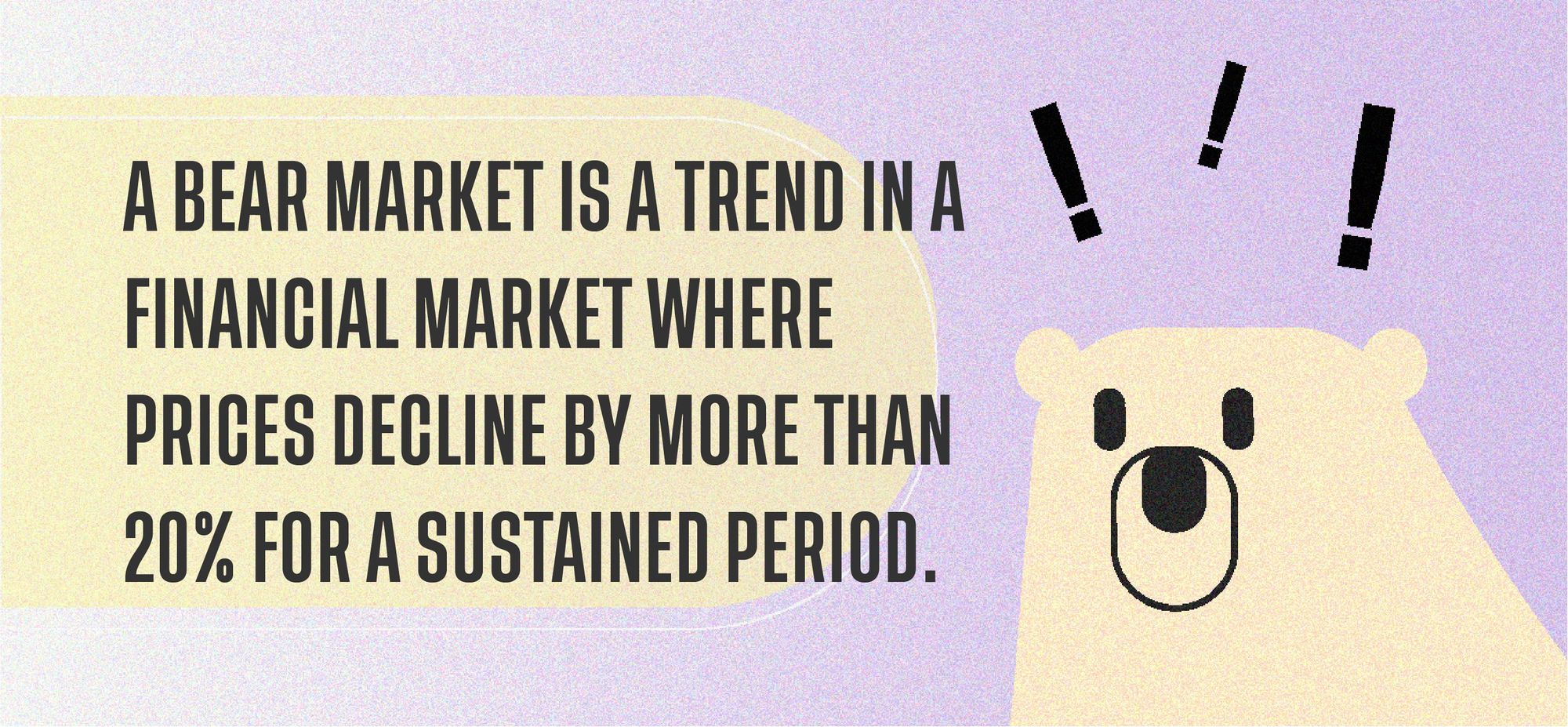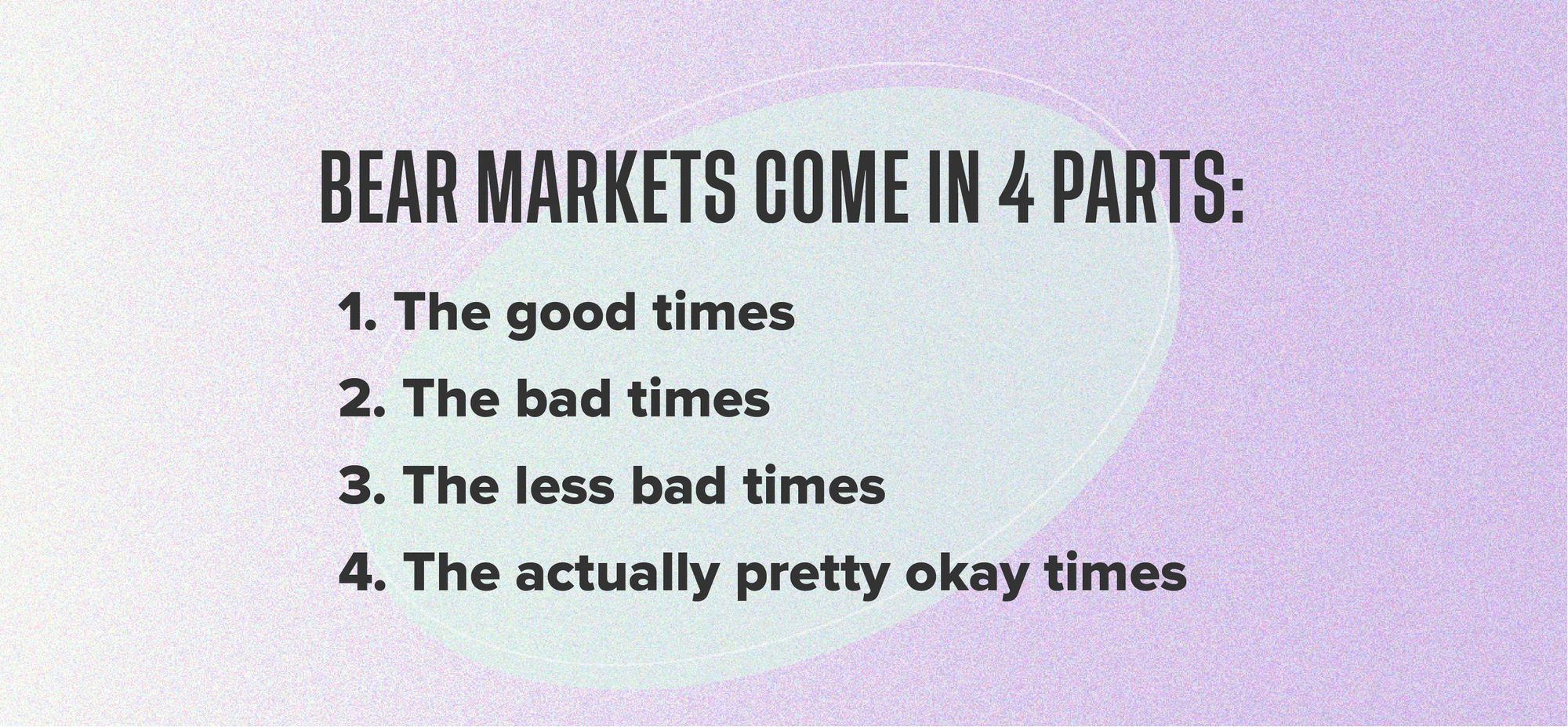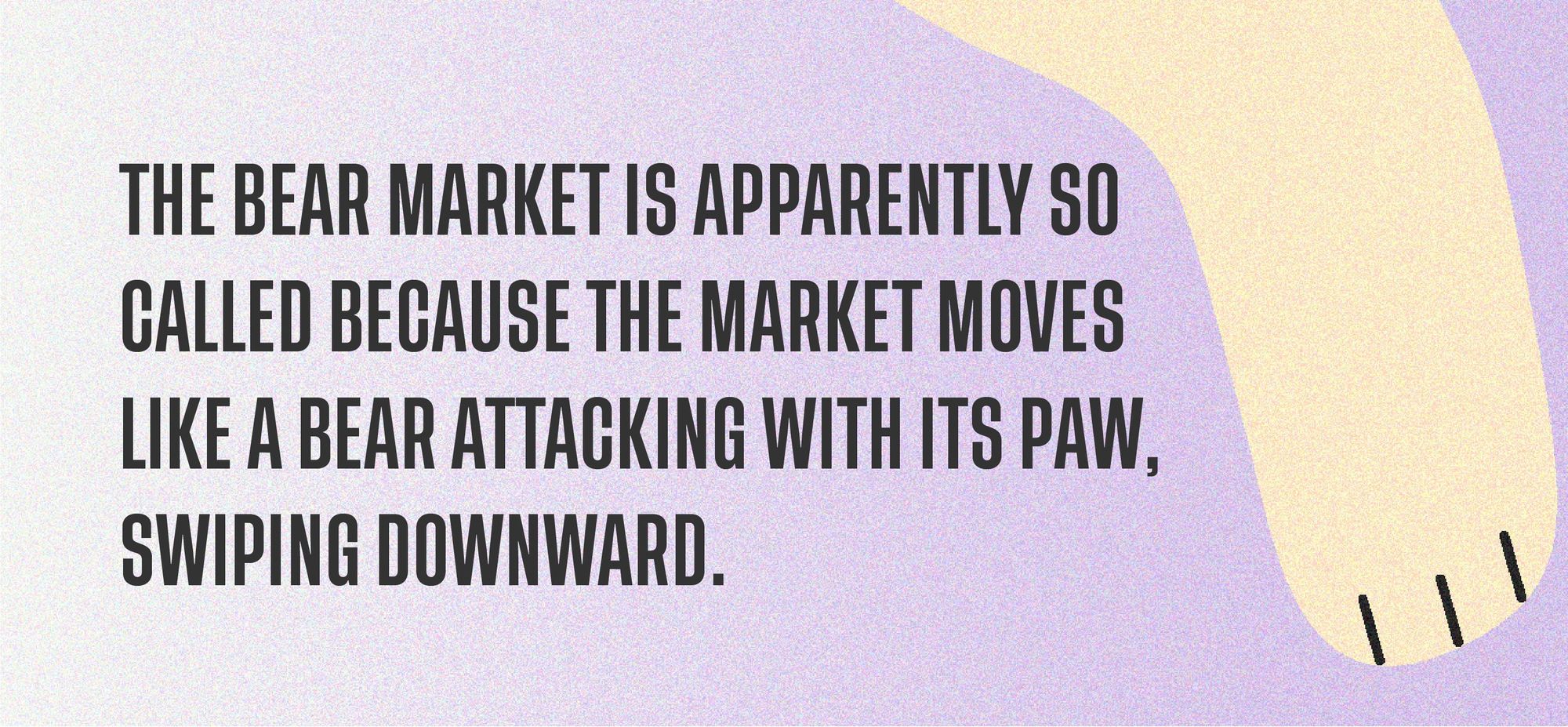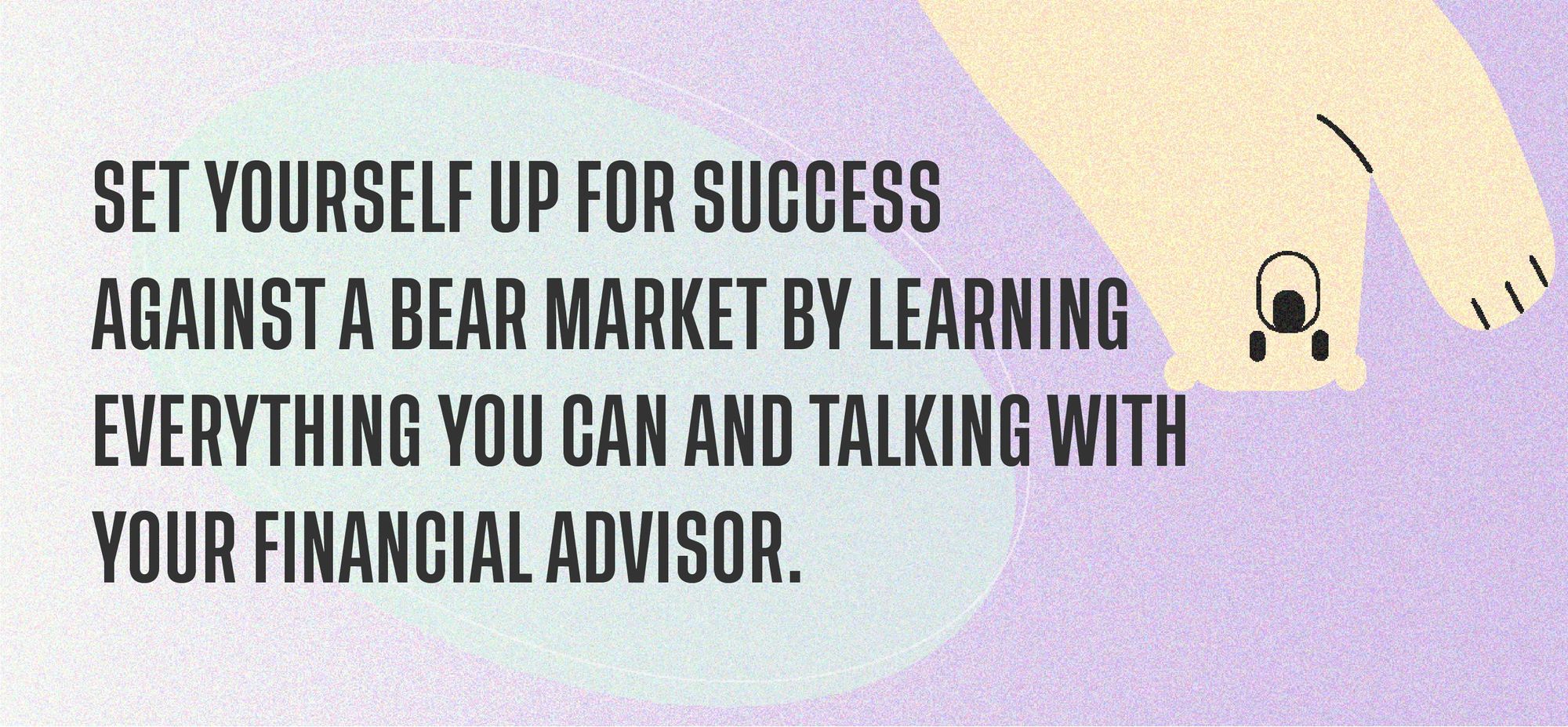What’s a Bear Market?
Sounds like it could be a bad thing? Or a… cuddly thing?
In recent months, the terms “bear market” and “bull market” have been tossed around a lot in a variety of contexts. But what do those terms actually refer to, and what should we know about each of them?
Let’s get back to basics! This series unpacks commonly misunderstood terms so you can level up your financial vocab. Today: bear markets. Later: bull markets.
What’s a Bear Market?

A bear market is a trend in a financial market where prices decline by more than 20% for a sustained period. Bear markets can go on for a long time, and are usually marked by a cloud of doom-and-gloom (or negative investor sentiment) and concern for the future of the economy.
Bear markets are different from normal fluctuations and market corrections in part because of this negative sentiment from investors.
Financial markets are often impacted by investor sentiment, and when investors are feeling negatively, it’s possible a market’s poor performance could actually be prolonged by that negative sentiment. It’s kind of a chicken-and-egg thing.
But, on the flip side, investor optimism can actually bring a bear market to an end. Again: chicken, egg.
Phases of a Bear Market

Bear markets come in four parts, in this order:
- The good times
- The bad times
- The less bad times
- The actually pretty okay times
According to Investopedia, the bear market is so called because the market moves like a bear attacking with its paw, swiping downward.
At the top of the swipe (the good times), the paw (market) is at its highest. There are high prices, and good investor sentiment.
But then as the paw comes down, we enter the bad times—investors begin to cash out, and prices plummet sharply. Trading activity diminishes. And that gloomy investor sentiment holds the market in an icy grip.

Finally, the paw reaches the bottom of its swipe. Speculators return to the market, confident that prices have fallen as far as they will, and activity sees an uptick. This can be an opportune time to buy into the market (if you can time it right), but it isn’t always.
Then, as the bear begins to retract its paw, we see the end of the bear market with a subtle uptick in prices and activity. Everyone looks around, surveys the damage, and makes their next move.
Are Bear Markets Bad?

The big question: are downturns like this bad?
It depends. Bear markets usually occur every couple of years, and can last just a few weeks or up to years depending on the cause and other market factors. Depending on the size of the market experiencing the downturn, it can also accompany or signal a greater economic event like a recession or a depression. In those cases, it can be pretty bad.
But for many investors, bear markets can represent just a bump in the road. Bear markets are normal parts of our long-term economic cycles, and historically, we’ve recovered from them eventually. (This is the moment where our lawyers make us remind you that although history can be informative, what’s happened in the past doesn’t guarantee what will happen in the future.)
They can even represent opportunity, depending on your specific circumstances as an investor. When the market has fallen to its lowest point and is about to recover, you may be able to get a very good deal on quality investments.
“Generally, the lower the price you pay for a quality investment, the higher your potential investment return over time,” reports a ghostwriter at Edward Jones. “This advice also holds true for market dips and corrections. Rebalancing your portfolio back to its target mix of investments (also called your asset allocation) is a way to use bear markets to your advantage.”

But those maneuvers can catch you out—especially if the market isn’t actually at its lowest point. If you’re wanting to understand bear markets in more depth and adjust your portfolio in the event of a bear market, you should talk to your financial advisor for more information.
For the rest of us, a perfectly reasonable strategy could be simply staying the course, playing the long game, and waiting for the market to recover.
There’s no one size fits all in investing, and no two bear markets are the same. The best way to fortify yourself against a bear market is to learn everything you can and collaborate with your financial advisor to set yourself up for success.
Ready to start investing?
You have two great options:
Moka, powered by Mogo, is an auto-investing platform that makes it easy to invest consistently to achieve financial freedom.
With Moka, you can automate your investing, skip the high fees and double your money compared to investing in a mutual fund.
| INVEST WITH MOKA |
If you want a more hands-on approach to your investing, you can start actively trading with our new commission-free stock trading app, MogoTrade. It's easiest way to trade stocks commission-free while erasing Canada’s carbon footprint.
| DOWNLOAD MOGOTRADE |
READ NEXT: Whats A Stock?
This blog is provided for informational purposes only, isn’t intended as investment advice, and isn’t meant to suggest a particular investment or strategy is suitable for any particular investor. Always remember that past performance is not a guarantee of future results. If you’re unsure about an investment, you may wish to obtain investment advice from a qualified professional.
All images, names, financial details are fictitious examples only. They do not represent real Moka or Mogo users, past or present, and are not testimonials or guarantees of any particular result. Past performance is no guarantee of future results. Any historical returns, expected returns or probability projections are hypothetical in nature and may not reflect actual future performance. Investment values are for illustrative purposes only.
The MogoTrade app is owned by Mogo Finance Technology Inc., a wholly owned subsidiary of Mogo Inc. Your investment account is opened with MogoTrade Inc., an order execution only broker registered with IIROC. https://www.iiroc.ca/